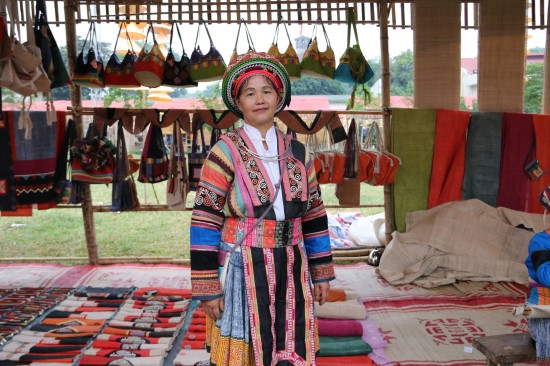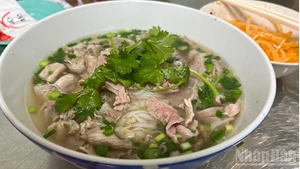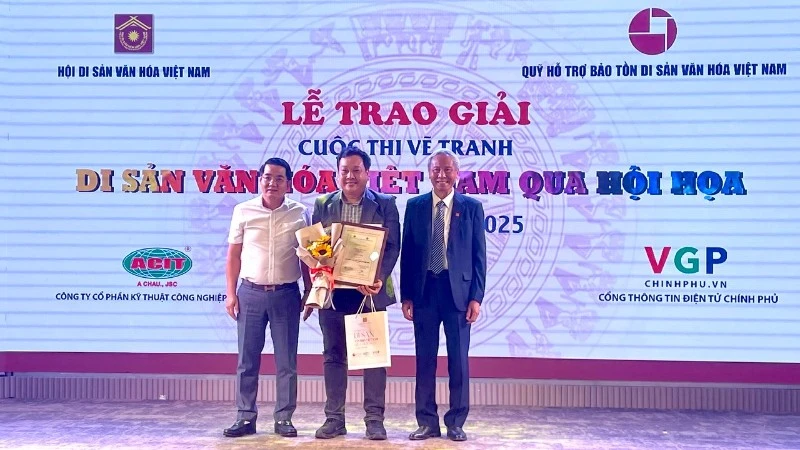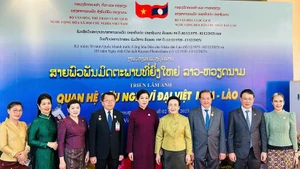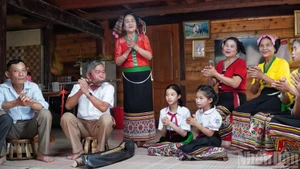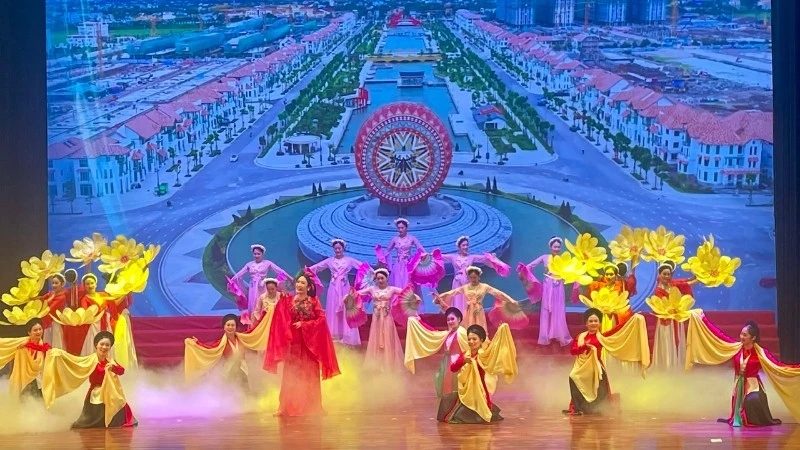It is not difficult to come by Mong women weaving traditional clothes and home decor in Hop Tien village, Lung Tam commune, Quan Ba district in the karst plateau province of Ha Giang. Through their talented and skilful hands, flax cloths are transformed into colourful dresses and scarves decorated with sophisticated brocade patterns imbued with their indigenous cultural characteristics.
Treasuring the traditional craft which faces the risk of being forgotten in today’s life, Mai has longed to turn the practice into a contemporary craft capable of generating income and improving the livelihood of locals. Mai recalled the day when she received her first order from a foreigner. It was a morning just like any other when she and other women from the neighbourhood were gathered together at her home to weave. A female tourist stopped by and watched them weaving for a while and then made her order. This motivated Mai to establish the cooperative.
During the first years of its establishment, the cooperative faced difficulties in reaching customers and promoting their products. Mai decided to come to Hanoi and walk to every souvenir shop around Hoan Kiem lake in the capital city to advertise her products. This was one of the hardest times for Mai and her cooperative that she still remembers vividly to this day. “Brocade weaving products of the Mong people were not popular at that time, so I brought our best products to convince people,” Mai recalled.
Mai also encountered obstacles in sourcing materials and human resources in those days. The majority of Mong women can weave very well because in the Mong community weaving is set as a criterion to measure a woman’s value. However, this job requires much time and effort from them, who have other housework and many other things to do. The Mong women used to consider weaving as something to do in their spare time, so they were unable to dedicate themselves whole-heartedly to the cooperative. In addition, Mai’s call for cooperative’s members to plant flax instead of corn received much opposition from their husbands. She had to visit the homes of every member with officers from the local women’s association to convince their husbands to support their wives’ work and showed them the advantages of growing flax and the craft of weaving.
Her efforts have been finally rewarded. Thanks to all her efforts and support from her family and local authorities, Hop Tien Co-op's prestige has been further enhanced. The cooperative’s products have travelled beyond Quan Ba district to reach out to more and more customers across the country and 20 countries around the world, including France, Japan, Sweden and the US. The cooperative’s operation has significantly improved the living standards of each member. Initially established with only 20 members, the cooperative now has more than 130 members, and working there helps them to earn around VND 3 million per month.
Mai is now busy with her schedule attending traditional craft product trade fairs and expos and other related events. She has been affectionately dubbed the “Queen of Ha Giang Brocade” by locals. She was honoured with the ‘People’s Artisan’ title in 2015 from the State in recognition of her contributions to safeguarding and promoting the Mong peoples traditional craft of flax weaving. Earlier, she received the 2014 Kovalevskaia award, which honours exemplary female models working in all fields of life. In 2008, 2010 and 2011, she was also invited by the French Embassy to attend an annual fair honouring creative women around the world. Most recently, she has been named in the 2017 list of top 50 most influential women in Vietnam by Forbes Vietnam Magazine.
In the coming time, Mai plans to diversify the cooperatives products in order to meet the increasing demands of customers, enhance human resources training, and improve facilities of the cooperative.
Flax weaving is practiced in many areas where Mong people live. But Vang Thi Mai is the first one to bring the practice outside of rural markets in the mountainous commune of Lung Tam to reach the world. Mai and other members in her cooperative have been working dedicatedly to preserve and promote the traditional practices of the Mong ethnic group.
